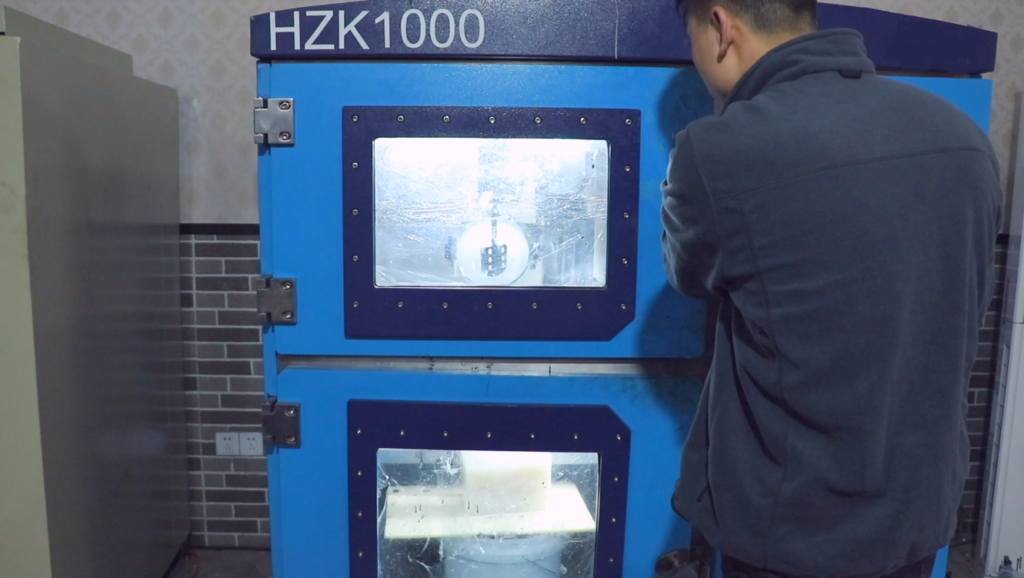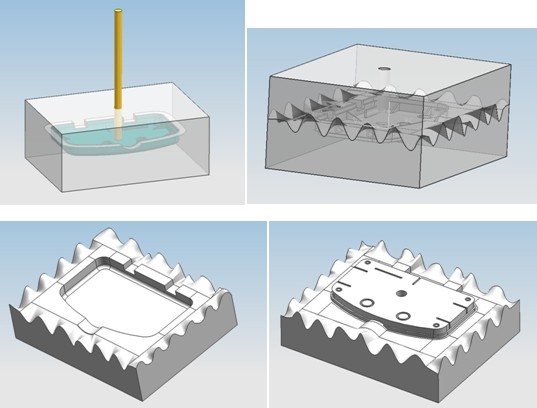How Does the Vacuum Molding Process Work?
Ever heard of the process of vacuum molding?
If you’re not too sure exactly what vacuum molding or vacuum casting is, then let us explain.
Vacuum molding is a copying technique used to create a small series of functional plastic parts. The process involves using two-component polyurethanes and silicone molds for fast production of high-quality prototypes or end-use products.
This highly versatile manufacturing technique suits low volume batch production when injection molding isn’t suitable due to costs. Typically, one mold can be used to produce up to twenty parts before any re-tooling is necessary.
Ready to discover exactly how this casting manufacturing works? Read on to learn more.
 The Principle of Vacuum Molding
The Principle of Vacuum Molding
First of all, let’s understand the whole principle of using vacuum molding as a process.
Vacuum molding involves shooting material into a pre-prepared silicone mold. This clever technology makes it possible to obtain multiple parts from one single mold. Therefore, the process results in significant economies of scale.
However, one disadvantage is that one mold can only be used a limited number of times. How many times depends on various factors like the geometry and complexity of the casted part, the material selected (and if it is charged), the color in case of a mass-tainted part, etc.
As these silicone molded parts are comparable to injection-molded parts, they are especially suitable for a number of purposes.
For example, fit and function testing, marketing purposes such as pre-launch product testing, as a series of final parts in limited quantities, or as concept models and prototypes.
Likewise, vacuum molding also lends itself well to a range of finishing degrees. The finish you need can be easily matched for your parts!
Advantages of Vacuum Casting
There are several advantages of using the method of vacuum casting. These include:
1. Fine Detail of Parts
Vacuum casting allows for fine detail and high precision of the parts. The quality of the silicone mold makes it entirely possible to create parts that are almost identical to the original model, even those with more complicated geometries. As a result, you’ll obtain quality completely comparable to the final part.
2. Quality of Parts
Likewise, the quality of the part will be high. Using resins allows us to choose a material extremely close to the correct material with a huge choice of hardness whether it be flexible or more rigid. The part can be colored with your choice of shade, or alternatively, it can have crystal-like transparency. There’s also the possibility of adding painted finishes.
Another advantage is that the use of the vacuum machine makes it possible to remove air from the material. This, in turn, prevents the formation of air bubbles that would make the parts weak or fragile.
3. Prices and Deadlines of Receiving Parts
In a rush to receive your parts? The process of vacuum molding only takes between seven to ten days to receive 30 to 50 functional prototype parts.
This makes vacuum molding an attractive method for those who often require parts urgently.
How Does Vacuum Casting Work?
So, now that we understand what vacuum casting is and what its benefits are, let’s answer the question – ‘how does casting work?’
1. Create The Master
First, the master part is designed from a three-dimensional model that is a .stl file. It’s typically made by stereolithography, 3D printing, laser sintering or CNC machining with a high-quality surface finish. If replication is wanted, a master object can be used instead.
2. Encasement
Next is the stage of the encasement. The master 3D printed model is coated in liquid silicone rubber to obtain mold. A vacuum is then used to eliminate any remaining air to ensure parts won’t be produced weak or fragile.
3. Mold Curing
Now, it’s onto mold curing. The mold cures within an oven before being carefully cut away from the master.
4. Assembly
A mold cavity is created, reassembling the mold. Holes are created to allow the resin to be injected.
5. Place Into Machine
The mold is placed into the bottom section of the vacuum casting machine.
6. Add Resin
Now it’s time to add the resin. The impression of the silicone mold is filled using polyurethane made of two components A+B casting resins by means of a specific vacuum casting machine.
This occurs in the top compartment of the vacuum casting machine in order to obtain the desired parts.
7. Part Curing
Once the casting phase is complete, the mold is put in a curing oven for the parts to cure.
8. Part Removal
Once the mold has cured, the final step is to post cure. The finished parts are removed from the mold.
The mold can then be re-used for the next production cycle. Once the parts are produced and ready, finishing touches can be made such as the process of over-molding and the addition of brass inserts.
Want to Learn More About Vacuum Casting?
If you’re new to vacuum molding and casting, we hope you now understand the process. Although the method requires a small investment due to the need to have an original model and to create a silicone model, it’s sure to be an investment worth making.
This is due to the fact that vacuum casting allows for fine detail and high quality of parts created in the process. Not to mention the fact that the procedure is hugely cost effective when it comes to numbers of parts created.
Want to learn more about vacuum casting? Learn all about the history of the process here.



 We don´t share your data.
We don´t share your data.